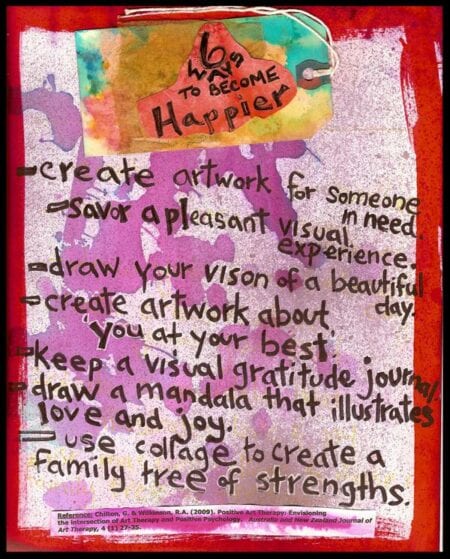Gioia–How to Be Happier
Concrete Steps to Improve Positivity
Myers Briggs Feelers/Positive or Negative Feelings?
Gioia and Rebecca are both Feelers on the Myers Briggs Personality Type. In fact, Gioia and Rebecca have the exact same profile—Extrovert/Intuitive/Feeler/Perceiver (ENFP). However, where they differ is that Gioia is prone to positive emotions (joy, connection, contentment, energy) and Rebecca negative ones (anxiety, guilt, anger).
Feeling Better Improves Our Capacity to Cope
Feelers tend to experience life through the lens of their emotions. This is great if you’re like Gioia but less so if you’re like Rebecca. It isn’t just that it feels better to feel better—that is self-evident—but it also significantly affects our ability to cope. When we feel better, we feel like we can take on life’s challenge. Increasing positivity has all sorts of beneficial side-effects that boost our resilience and equip us to manage the stress of life.
Feeling Better Changes Our Perceptions
Feeling better actually changes the way we see the world. Barbara Fredrickson, a researcher from UNC, identified that positive emotions broaden our perceptions so that we simultaneously see more and interpret what we are seeing with more receptivity, curiosity and creativity. We are better able to resolve problems and more willing to take them on. An added side-effect of positivity is that it boosts our immune system and makes us recover more quickly from illness.
We Need to Increase Our Ratio of Positive to Negative Emotions
So whether we’re prone to negative emotions, positive emotions, or even if we’re not much of a feeler and more of a thinker, we need to increase our ratio of positive to negative emotions/experiences. The question is, how to feel better, especially when it isn’t in our nature?
We Suggest Two Tracks to Increase Positivity:
1). Using strategies that can immediately shift our mood. This is particularly important if we’ve experienced something that is stressful or traumatic.
- Contact with animals
- Go out in nature
- Garden
- Exercise
- Do art/express your feelings
- Do activities (coloring, crafting, tinkering on a car, gardening) that get you into a state of flow
- Be with people who make you feel safe
- Focus on your breathing for a couple of minutes
- Do something kind or helpful for someone else
- Listen to music
- Notice with detail what you are experiencing in your body and mind and the environment where you are physically located
2). Using longer term strategies that help build a foundation of positivity.
- Savor positive things—you can do this in conversation with others (positive reminiscing), looking at photos, reading old letters, etc.
- Think about what has gone well for you and for the world that day
- Find positive meaning in negative events (only when the time is right)
- Find what gives you a sense of meaning and purpose
- Cultivate your strengths
- Develop healthy distractions
- Avoid unhealthy distractions
- Notice and credit yourself for what you have accomplished each day
- Sleep well
- Practice curiosity and learn more about others you encounter in your life
- Visualize how your life would be if it has gone as well as you could imagine
Start cultivating some of these practices and see how feeling better more often helps you in your life.
Positively yours, Rebecca and Gioia
Art Activity
Make a collage of the things that make you feel better in your life. You can use your own photos of people, creatures, places, activities, etc. from your life. Keep the image somewhere visible in your environment so that you can see it often. Find ways to increase what you put in the picture in your day to day life.
